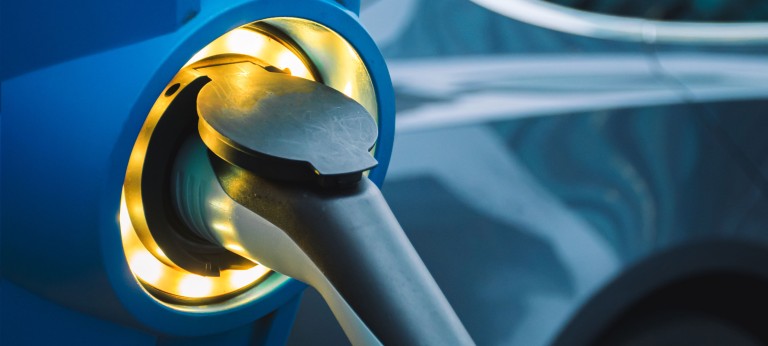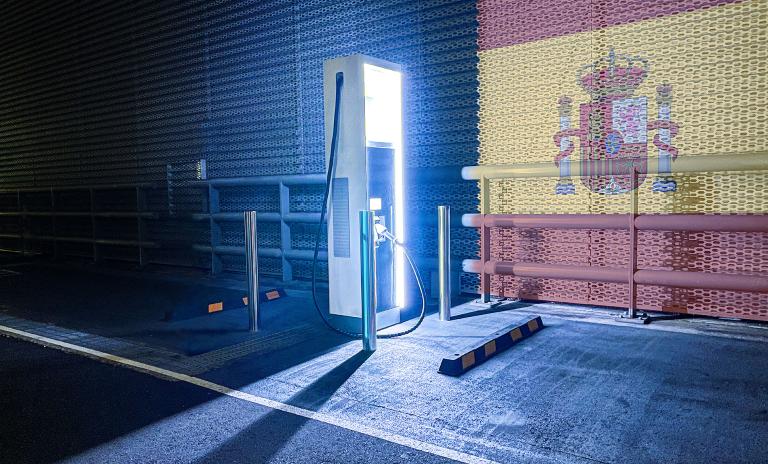EV Charging Index: Expert insight from Spain
![{[downloads[language].preview]}](https://www.rolandberger.com/publications/publication_image/23_2077_art_ev_charging_index_deep_dive_spain_cover_2_download_preview.jpg)
EV adoption in Spain is growing, but administrative inefficiencies are limiting public charging expansion. Learn more in Roland Berger’s EV Charging Index 2023.


EV sales penetration in Spain is below the global average but beginning to rise quickly. The ratio of private charge points to EVs is currently among the top three worldwide, but administrative inefficiencies are hindering growth in public charge points, despite a dynamic market.
The sales penetration rate for electric vehicles in Spain is 10%. This is below the global average of 16% but now rising quickly thanks to government incentives, both for individuals and companies transitioning fleets to EVs. On the charging side, Spain has launched aid programs to boost the deployment of infrastructure. Subsidies now average 30% per charging point, with maximums per company and region. There are also regulations requiring the installation of charging points at petrol stations, car parks and public buildings.
The main obstacle to charge point deployment isn’t a lack of commitment, but the inefficiency of the installation processes. It can take up to two years to obtain authorization or connect to the network, which has meant that 20-25% of total public charging points already installed cannot operate. As a result, the charging infrastructure is currently well behind the government's target of 100,000 charge points by 2023.
EV owners are still largely affluent and use their cars for shorter, local trips. We estimate that 90% of EV owners charge at home or work, which explains Spain’s vehicle-to-point ratio of 0.9 for private charging – among the top three worldwide. The ratio for public charging, though, is 13.4 vehicles per charge point, just better than the global average of 15.9 and significantly inferior to the top-three average of 1.8. As the market matures, the user profile will change – most EV owners will not be able charge privately, increasing the need for public charge points. Some charge-point operators (CPOs), such as Zunder, are developing stations with extra customer services like music and shopping opportunities while vehicles are charging.
The EV charging sector in Spain is very dynamic, with four distinct clusters.
Firstly, the utilities, such as Iberdrola and, to a lesser extent, Endesa, are clearly winning the battle. They are deploying a lot of charging points throughout the country, both slow and fast, and have made a strong commitment to this industry.
Independent CPOs, mainly Zunder and Wenea, have different focuses. While Zunder is concentrating more on en-route stations, Wenea is installing more destination charge points. Investment activity has soared in this cluster with several funds taking positions in these companies. Large international players such as Ionity are still not very present in Spain, although this will likely change, especially in the fast-charging segment.
Less active are large oil companies like Repsol, CEPSA, BP and Galp. Their deployment strategies have been somewhat ‘reactive’ to date, mostly structured around partnerships with utilities, both with and without exclusivity.
The final cluster is OEMs. Tesla is deploying proprietary networks; Porsche has a structural agreement with Ionity, complemented by agreements with the likes of Iberdrola and Zunder.
![{[downloads[language].preview]}](https://www.rolandberger.com/publications/publication_image/23_2077_art_ev_charging_index_deep_dive_spain_cover_2_download_preview.jpg)
EV adoption in Spain is growing, but administrative inefficiencies are limiting public charging expansion. Learn more in Roland Berger’s EV Charging Index 2023.
Sign up for our newsletter and get regular updates on Automotive topics.
